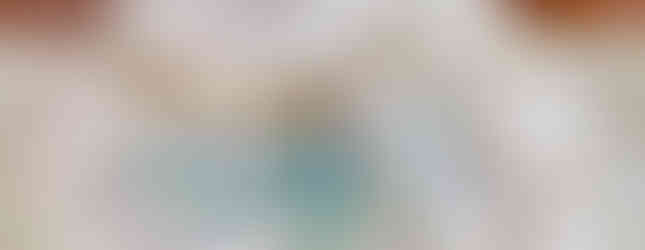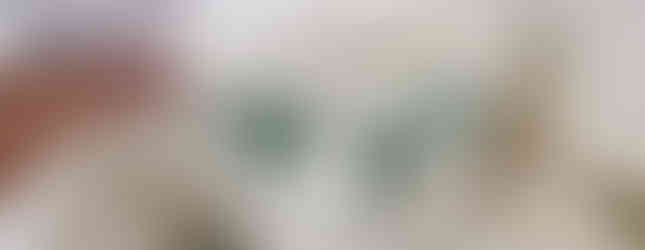The secret message of grass
- willa
- Jan 24, 2020
- 4 min read
Updated: Jan 25, 2020
Who could ever guess that the peaceful "Grass" design of this very rare Belleek cabaret set carries a secret message from turbulent times?
Belleek designs were all based on local Irish natural phenomena: the sea, shamrocks, grass, and the local river Erne full of trout and salmon. When Belleek started making porcelain, the first designers clearly made a choice not to go with the prevailing Victorian English fashion, but to make an Irish statement. Ireland had never had its very own world class factory; it was a great triumph for a colonised country that had been downtrodden as part of the British Empire and was still recovering from a devastating famine in the 1840s.
Did you know that in oneirology (the science of dreams) grass is a symbol of community, interconnectedness and abundance? This makes sense as the roots of grass are tightly connected underground, allowing grass to be resilient and interconnected.

The Belleek Pottery was founded in the 1850s by local land owner John Caldwell Bloomfield, Dublin financier and porcelain enthusiast David McBirney and London architect/ designer Robert Williams Armstrong. It took them hard work before they were able to successfully realise their dream of making porcelain with the local Belleek clay, but when in 1863 they finally did, it turned out to be world-class "parian" porcelain of the finest quality.
A period of great creativity followed, with many wonderful and quirky designs coming into being. Belleek had attracted English skilled workers from Stoke-on-Trent and Worcester who trained up the local Belleek people. They made a huge amount of earthenware for local Irish daily use but, under the talented guidance of Armstrong, the porcelain designs that were sold to the wealthy classes all over the world were undeniably Irish in nature.
One thing the factory was not very good at was record keeping, and therefore we don't know that much about the first designs. Some designs can be linked to a designer, but others are anonymous. This "Grass" cabaret set is from an unnamed designer, but it surely is very Irish, and very charming.
For a while there was stability and the factory was busy growing and becoming world famous, but in the 1880s a turbulent period began. All over Ireland political tensions between Protestants and Catholics came to a boiling point. Like most institutions in the county, the Belleek factory was owned and managed by Protestants, but the local village workforce was mostly Catholic and things became very tense. There were strikes and assaults and a lot of gossip and bad feeling. The national instability would ultimately result in a civil war and, in 1921, the partition of the island of Ireland into the Republic of Ireland, and Northern Ireland (part of the United Kingdom).
Back in Belleek, in 1884 the position of the English (Protestant) manager had become untenable and James Cleary, a local Belleek man was put in charge, later handing over to his brother Edward. Both men brought great artistic and technical skill and restored some order and stability while the political unrest kept raging not only in Belleek, but in all of Ireland. Today, James Cleary's grandson Fergus Cleary is still the Head of Design at the factory today, responsible for many of the modern designs that guarantee the factory's survival.
In the meantime, McBirney had suddenly died in 1882, and with him the money fell away. The factory now got into financial difficulties, and it was put up for sale. Adding to its misery, the other two founders died in the next five years, further weakening the legacy. The factory was closed for a while, but eventually it was rescued by a collective consisting of local business owners and Catholic clergy, who would run and finance it for the next few decades.
The Belleek Pottery was rescued and the local Catholic population felt they were supported. But the factory was managed by a collective of entirely inept people who had no idea how to run a world-class pottery - porcelain making is known to be one of the most difficult production processes one can ever undertake. For many years, due to a lack of vision and expertise, nothing new was designed and the quality went down. The Belleek clay ran out - we don't know exactly when, but you can feel it when you have a piece of Belleek in your hands; that crisp, super-thin quality started to be replaced with a heavier, more English-feeling porcelain as clay from Cornwall was used instead of the local Belleek clay.

The absolutely wonderful thing today is that the factory is still thriving, mostly supplying beautiful sleek modern Irish designs and Irish memorabilia to the US market. I have visited several times now; this is a picture of me on the bridge over the river Erne, which now is the border between the Republic of Ireland and Northern Ireland. I have come to love the place, the village and the wonderful people working there, and will show you more in the near future. But that original Belleek quality of egg shell porcelain and iridescent glaze is something we can now only find in the antique items.
Almost all of the Belleek items in my shop are either from the first period of Belleek (1863-1891) or the beginning of the second period (1891-1926); they all have that original crisp quality and the beautiful slightly iridescent glaze. This is a first-period so-called "déjeuner" set; déjeuner is French for breakfast, and here it stands for a tea set for two on a matching tray. It is made in the Grass design, which is a bit rarer than many of the more nautical designs and particularly as a cabaret set it is extremely hard to come by. The teapot has a wonderful "duck spout", much like the famous English teapots from the 1840s, with a grinning duck's face as a spout. Each item has grass blades and heads embossed on it, picked off in muted and slightly iridescent colours. The finials of the teapot and sugar pot, as well as the little handles of the sugar pot, look like cut-off wheat sheafs. The surface of the tray is moulded like a woven basket.
You can find this wonderful service here in my shop (and you can see all my cabaret sets here), and if you always want to see the latest additions, follow me on Instagram... I post pictures and a story every single day 🐚🧜🏻♀️☘️.
Enjoy your weekend!
This week's new treasures:
#gentlerattleofchina #antiqueporcelain #finebonechina #finechina #antiqueshop #englishantiques #antiquing #antique_r_us #decorativeantiques #cabaretset #belleek #fermanagh #northernireland #irishporcelain #irishdesign #belleekfermanagh #teaservice #teatime #highteaparty #hightea #teacups #teaset #grass #communityfeeling































































תגובות